|
After stumbling across a funny anecdote involving Jean Lenox and Harry O. Sutton's visit to an "Old Ladies Home," I originally intended to share that one item, which sounded like something that could happen where my mom lives. However, one thing led to another. When I decided to see what else I might easily turn up about the song-writing team, I found other anecdotes. A few contradictory newspaper items led me on a quest to determine Lenox's relationship to Sutton. How far should we trust the newspaper anecdotes? To what extent might they have served as good public relations, perhaps to enhance the song-writing team's reputation? Exactly who were Jean Lenox and Harry O. Sutton? What can we learn from newspapers and public records? I'll admit to not finding clear-cut answers to some of my questions but will offer several reasons for the remaining mysteries. Perhaps someone will have the curiosity and time to look for more. Biographical Backgrounds and Mysteries Harry O. Sutton (1881-1911)
During a Presbyterian social at their home in early April, 1893, 11-year-old Harry gave what may have been his first public performance when he and his aunt entertained guests with their unspecified piano duet.
The March 8, 1911 Naples Record mentions a march, Black Diamond Express, composed by 12-year-old Harry Sutton. I have not been able to verify this piece through newspapers or copyright records, but if Sutton composed it, he should have been older than reported. The Lehigh Valley Railroad line's Black Diamond Express made its first run on May 18, 1996 when Harry would have been 15. In April 1898, a few months shy of 17, Harry Owen Sutton copyrighted his first song, Sweet Nancy Lee, with lyric by W. H. W. Leland. The July 13 Naples Record commented, "Harry O. Sutton, of Olean, formerly of Naples, has composed a beautiful waltz song entitled Sweet Nancy Lee. It has been published and has proven popular in the large theaters." The article does not specify theater names or locations although other articles mention the song. In February 1902, for example, Rochester's Democrat and Chronicle described the song as "simple and melodious" and "well suited to the sentiment." At least a third-generation musician, Harry had begun early to carry on the Sutton tradition. According to the 1865 New York State census for Naples and the 1870 U. S. Federal Census, his grandfather Myron Carl Sutton was a "farmer and music dealer." Well before Harry's birth, this cornetist/violinist future grandfather also led Sutton's Band. Naples took pride in its local music and in Sutton's music business as illustrated by the following excerpt from a lengthy poem published in the June 30, 1860 Naples Weekly Express: A June 5, 1929 Naples Record article published on the occasion of the ninety-first birthday of Mrs. Olive Case Sutton, Myron Sutton's wife and Harry's grandmother, identified her as "a fine musician" who "brought to this town the first piano, a large square one." People were said to have come "many miles to hear Mr. and Mrs. Sutton play."
Among the more than two-dozen O. E. Sutton compositions located in copyright records and newspapers are Fireman's Parade March (during or before June 1882, Scott R. Sutton, publisher), Silver Star Polka (during or before 1888); Flour City, lancers, The Smuggler, march, and Polonaise (during or before 1889); Trolley Polka (1896); The Electric Wave March (1897); Post Express (during or before 1898); Young America, march and two-step (1898); Our Favorite, two-step (1898); Funeral March, The Golden Gates (1899); Salute to Sam Johnson, cakewalk & two-step (1899); The Darktown Swell, march in ragtime (1899); Magnolia, three-step (1900);The Honeymoon (1901); Brownies' Quickstep (1901) Colonel Henry's March (1902); Midnight Revelers (1903), Roosevelt and Fairbanks Campaign March (1904), The Newsboy's March (1905); and Solitaire, an Autumn Reverie (1905).
Around 16, Harry left his aunt and uncle, the Pierces, and went to live with his mother, two siblings, his maternal grandmother, and his mother's sister. Before his 18th birthday, Harry copyrighted Cotton Pickers Rag, Bon Air Waltz, and Aunt Jemima's Birthday Party. Because he was living in Olean, these pieces were originally published there although Harry O. Sutton Co. or Sutton Music Publishing Co., both of New York City, later reissued them.
Harry knew his career path. Although he was not yet 20, the 1900 census listed his occupation as "musician." No doubt, Harry Sutton's musical family helped shape his career. He would go on to compose an assortment of music ranging from cakewalk and coon songs to a comic operetta, many of the most successful pieces with lyricist Jean Lenox. Although Owen Sutton had frequently been absent from home when Harry was small and started a new family in Rochester in 1893, he must have maintained contact with his first family or, at least, maintained interest in his second son. Owen and 18-year-old Harry teamed up in Pennsylvania for a week-long series of concerts at a Wilkes-Barre department store, during which they promoted and sold their music: A couple years later, an item from the Olean Democrat indicates that Harry was still living in Olean and playing solo gigs: By 21, Harry had been working with an Olean orchestra and was ready for a career move from Olean to Manhattan. According to the New York, New York Extracted Marriage Index, 1666-1937, Harry O. Sutton married Jean V. Lenox somewhere in Manhattan on September 22, 1903. Ancestry.com provides only this information and a certificate number: 18672. Unfortunately, the certificate is not available on the website as many are. Marriage certainly helps explain how Harry O. Sutton and Jean Lenox became a songwriting team in 1904, the year their first collaborations appeared in copyright records. A second marriage record for Harry Sutton raises questions. On January 15, 1905, he married Vera G. Pearing in Holyoke, Massachusetts. The record identifies Harry's birthplace as Naples, New York, and Vera's as Charleston, South Carolina. Vera's parents are John Pearing and M. E. Ravenel. The record identifies Harry Sutton's occupation as "Musician" and Vera's as "At home." Harry had married into another musical family. A variety of military records on Ancestry and Fold3 reveal that Vera's father, John Pearing, had been a long-time U. S. Army band member.
Pinpointing the precise relationship between Jean Lenox and Harry Sutton becomes increasingly complicated as we look at other sources. Further discussion of this mystery will appear below as I discuss Harry's death and what I know of Jean Lenox' s life. Although I haven't found other records for Vera Pearing, I have located other children for John and Mary E. Pearing, including a daughter approximately six years older than Vera, based on Vera's reported age in 1905 when she married Harry Sutton. Although the spelling varies, John and Mary E. Perring in the 1880 census are clearly Vera's parents from the 1905 marriage record--John, a soldier born in New York, and Mary E. born in South Carolina: Two-year-old daughter Jennie appears at the top of the next census page: Thus, Jennie was born in approximately 1878. At the time of 1905 marriage, Vera gave her age as 21, meaning she should have been born sometime during the year preceding January 18, 1885. Based on the early 1905 marriage, most likely she was born in 1884. Vera and Harry O. Sutton's Deaths. Five years after marrying Vera, Harry appears in the 1910 census as a widower, age 29, working as manager of a music publishing house. He is living with his 56-year old widow mother and his 3-year-old son Lloyd or Loyd; both spellings appear from record to record. I have split the census record for legibility: At least one problem exists with this census record. Mary E. was not Harry Sutton's mother, whose name was Alice. We have already seen that Mary E., born in South Carolina, was Vera Pearing's mother. Quite likely, the census taker jumped to wrong conclusions or was given incorrect information by someone else, such as a neighbor. A less likely, but not impossible alternative, would be that Mary or Harry deceived the census taker for some reason. From this census record, we can infer that Vera and her father had both died. It is easy to conclude that Vera's widowed mother might find a new home with her son-in-law, helping care for her grandson. This arrangement could benefit all three. Still in his 20s, Harry O. Sutton died on February 22, 1911. Although his cause of death was not widely publicized, the February 25 Allentown [PA] Democrat provides some new information although not all specific or accurate:
On the same day, The New York Times carried this brief announcement:  Frank E. Campbell's Funeral Church, opened April 1899, 241 W. 23rd St.; now located at 1076 Madison Ave. and known as funeral home of celebrities, including Roscoe "Fatty" Arbuckle, Irving Berlin, Walter Cronkite, George Gershwin, Judy Garland, Jim Henson, John Lennon, Jacqueline Kennedy Onassis, Igor Stravinsky, Arturo Toscanini, Mae West, and Rudolph Valentino. A September 2019 update: Harry's Final Years. Thanks to someone who contacted me through my website and who has asked to be identified only as a Sutton relative, I have additional information pertaining to Harry Sutton's "failing health" and death. Knowing that many of its readers knew Harry Sutton from his early years in Naples, the March 17, 1909 Naples News informed its readers of his illness and on-going treatment" From this information, we can estimate that Sutton became ill sometime during summer 1908, very shortly after he and Jean Lenox had launched their vaudeville act. A March 8, 1911 Naples News article sent by the same Sutton relative adds, "He had been ill about four years and had stayed most of the time in the mountains near Allentown, Pa. His death was sudden and a shock to his relatives, as we thought he was getting better." The article then lists his grandmother Olive M. Sutton, uncle Scott R. Sutton, and Mr. and Mrs. Frank G. Pierce, who largely raised him, as his close Naples relatives. Any of these people should have been able to provide information about the course of his illness, making it possible that Harry Sutton might have showed signs of illness as early as 1907. With the information contained in these two articles, we have to wonder where Harry Sutton was living at the time of the 1910 census. Were his mother-in-law and son living in his apartment while he was approximately a hundred miles away in the mountains near Allentown, PA? Had he recovered sufficiently since his letter to the Pierces to have returned to New York City? Was he in charge of the Witmark Publishing Department? Harry O. Sutton is buried at Woodlawn Cemetery in the Bronx. Jean Lenox Was Jean Lenox Harry O. Sutton's sister or his wife? Evidence exists for both possibilities.
Jean's mother's South Carolina birth brings to mind Vera's mother's birthplace. Jean's approximate 1884 birth also matches Vera's birth year, based on Vera's age when marrying Harry. According to census records, Jean Lenox lived alone at least temporarily in 1910 while Harry lived with his small son and Vera's mother--a peculiar arrangement if Vera Pearing Sutton/Jean Lenox is still alive and living as Jean Lenox. In 1912, Jean Lenox advertised for someone to care for a 5-year-old boy, a child the age Harry and Vera's son would have been a year after Harry's death: A year later, Lenox sought someone older to fill a similar position: Both advertisements conspicuously indicate Lenox's marital status (MISS JEAN LENOX) and fail to identify her relationship to the boy.
However, aside from Sutton's Allentown obituary saying that Sutton had performed with his sister Jean Lenox and the 1915 census identifying Loyd/Lloyd Sutton as her nephew, I have found no evidence to support the brother-sister relationship. When Harry O. Sutton died, a brief article appearing in the town where Harry had lived as a boy with his aunt and uncle supports the likelihood that Vera Pearing and Jean Lenox were one and the same. This item seems to tell us that the former Jean Lenox was Harry's wife at his time of death. However, that still leaves us wondering why the 1910 census identifies Harry as a widower and the 1915 New York State Census identifies the boy as Jean's nephew. By 1920, 13-year-old Loyd no longer lived in New York City with Jean Lenox, either the boy's aunt or mother. Instead, he was living with Mary Pearing, his grandmother, and with Thomas Pearing, his uncle and Vera's brother. Mary and Thomas first appear in the 1918 Washington directory. Thomas had found work as a clerk at the Treasury Department, but that may not have been their reason for moving to the District of Columbia. National Archives records reveal that former army band member John Pearing, Mary's husband and Thomas and Vera's father, died in Washington, D. C. on December 3, 1918, and was interred in the Soldier's Home National Cemetery, now the United States Soldiers and Airmen's National Cemetery. John Pearing's cause of death was tuberculosis, the same disease that had claimed Harry Sutton's life and that would claim Thomas Pearing's life in 1924. Why was Loyd no longer with Jean Lenox as he had been five years earlier? If Jean Lenox was really Loyd's aunt, how was she related to the Pearings? In other words, how could Jean Lenox be Loyd's aunt and Thomas Pearing Loyd's uncle? Improbable as it sounds, it's not impossible. According to birthdates appearing in census records, Vera had an older sister named Jennie. Might Harry Sutton's first wife have been Jean Lenox/Jennie Pearing? With Vera as a second wife and mother of Loyd, Jennie Pearing (stage name Jean Lenox) would have been as much young Loyd's aunt as Thomas Pearing was his uncle. This would also mean that Harry could have been a widower as indicated by the 1910 census. Vera could have died while Jennie/Jean lived on to become Loyd's guardian for several years after Harry's 1911 death. Finally, this scenario could explain why Mary E. Pearing might live with her son-in-law while Jean Lenox/Jennie Pearing lived elsewhere. Otherwise, it seems unlikely that Mary would live with her son-in-law following a divorce from daughter Jennie. However, if Harry next married Mary's younger daughter Vera, Mary might logically care for the son of that deceased daughter--one of two daughters who had been married to the boy's father, Harry Sutton. While this possibility would solve several mysteries, it would leave us with an age problem. Jean Lenox and Vera Sutton appear to have been the same age, not Jean Lenox and Jennie Sutton. The biggest question remains: Who exactly was Jean Lenox--the boy's aunt or mother? Loyd Sutton's 1943 Charlotte, North Carolina marriage certificate offers little help, listing his parents as Harry O. Sutton and Vera Sutton, both deceased. His 1952 Oregon death certificate proves more interesting. Listing Harry O. Sutton as Loyd's father, it identifies his mother only by the first name Jean. A September 2019 Update: Part of the Pearing/Lenox Mystery Solved. Thanks to Bill Edwards (https://www. perfessorbill.com/) and again to the Sutton relative who contacted me through my website, I'm also able to add more about Jean Lenox's life and death as well as her relationship to Harry Sutton. Bill Edwards sent two valuable public records. To supplement the bare bones 1903 marriage record for Jean V. Lenox and Harry O. Sutton that I originally included in the Sutton biographical information, he supplied a more detailed record that provides the middle name Veronica and both parents' names: John Lenox and Helen M. Ravenel. At first glance, we might focus on Jean's father's surname and conclude she really was a Lenox. However, her mother's maiden name, Ravenel, matches Vera Pearing's mother's maiden name (M. E. Ravenel), and her father's first name matches Vera's father's (John Pearing). This record sent by Edwards supports the likelihood that Jean Lenox was Vera Pearing and introduces the possibilities that Vera may have been a nickname for Veronica. With M. E. Ravenel Pearing's name also appearing from place to place as Mary E., Ellen M., and Helen M., we can guess that this may have been an example of variations common in census records. As for John Lenox, I first considered the possibility that Jean gave his middle name for the marriage record because she had previously adopted it as her pseudonym. However, I found no middle name among the military and civilian records I had saved. Even if John Pearing's middle name was Lenox, Jean supplied a false surname for her father when marrying under her pseudonym. Because this record came from familysearch.com, I checked the corresponding record for Harry Owen Sutton, and it provided slightly more detailed information although none of it is surprising. It gave his birth place as Naples, NY, and age as 22; Jean's as Charleston, SC, and age as 20. Edwards also located and suggested I look at a 1900 U. S. census entry for the John Faring family. He added that he was 90% sure that this was the Pearing family. With John, Ellen M., Jennie (22), and Thomas (18), I had to agree. The only person missing is Vera/Jean, who according to her age of 20 when she married Harry Sutton in 1903 and her age in later census records, should have been approximately 16. Although a variety of reasons could explain her absence, it also raises a question: Might Jennie and Vera/Jean have been the same person? In answer to the possibility that Lenox may have been John Pearing's middle name, this is the only record in which I have seen what may be an initial for John Pearing although the letters and numbers immediately under Daisy's name and between John's surname and given name might mean this is not an initial at all, but part of some census taker's notes. If an initial, it is almost certainly a T, rather than an L for Lenox. Furthermore, it appears to be a first name, making John his middle name although the name he used. Although the initial between John's last and first names differs somewhat from the T starting his son Thomas' name, it differs far more from the L that is their neighbor Daisy's name at the top of the image. The horizontal line that could possibly make this initial an L is part of the E for wife Ellen M. The 1905 New York state census confirms that this 1900 record was for the Pearing family. The 1905 census includes John, Ellen M., and Thomas F, now 23, but not Jennie. In both the 1900 U.S. and 1905 state census, John is a ticket agent for the railroad. We can easily explain Jennie's absence if Jennie, Jean, and Vera were the same person. She had already married Harry Sutton. Items received from the Sutton relative substantiate most of my earlier speculation. The March 8, 1911 Naples News, quoted in the Harry Sutton biographical update above, comments not only on his death, but also on his wife and son: Although the first sentence contains an incorrect death date, the last sentence tells us that Jean Lenox was Loyd C. Sutton's mother, not his aunt. We can conclude that Jean Lenox was Vera Pearing Sutton. The same Sutton relative sent a transcription of another crucial item I hadn't been able to find. Armed with the date and page number, I tried again to locate the original and again temporarily failed. The extremely dark copy of the New York Times I had accessed was illegible and unsearchable. By using a different resource to read the same issue, I found Jean V. Sutton's/Jean Lenox's death announcement: The announcement not only identifies Jean V. Sutton as Jean Lenox but also confirms she was the daughter of Mrs. Mary Pearing. Since Jean V. Sutton had died in 1919, it also explains why the Sutton's son was living with her brother Thomas and mother at the time of the 1920 census. After the Sutton relative contacted me he first time, he visited a nearby LDS library to search for more information. One document he located was Jean V. Sutton's death certificate. Given Harry's and her father's deaths from tuberculosis and Jean's young age at time of death, it comes as no surprise that she died of pulmonary tuberculosis. However, the death certificate does contain a few surprises:
Several mysteries have been solved since my original Lenox and Sutton blog post on October 31, 2018, yet several others remain. Although divorce was sometimes treated as death, I've found no evidence that Harry O Sutton and Jean V. Pearing Sutton had divorced. The New York Times death notice above refers to her as "beloved wife of the late Harry O. Sutton." Why was Harry listed as a widower in the 1910 census? Was it an error on the census taker's part or something else? Why did Jean Sutton live apart as Miss Jean Lenox during some of their married years? And why did Miss Jean Lenox pass off her son as her nephew? The most logical guess is that the team of Lenox and Sutton may have concealed their marital status for professional reasons. Some of the articles and documents we have already seen may have intentionally concealed their marriage and facts of Jean's age and birthplace. Others that we will see below do much the same. Living as Miss Jean Lenox, Jean Vera Sutton may have identified Loyd as her nephew to avoid questions about his sudden appearance in her sole charge or to avoid the stigma of appearing to be an unwed mother. Professional Careers In the March 14, 1908 issue of Music Trade Review, Jean Lenox briefly describes meeting Harry O. Sutton while also providing some personal background. Four and a half years into their marriage, she avoids mentioning anything other than a working relationship and formally refers to him as "Mr. Sutton": In 1904, while engaged in writing short stories for the magazines, I chanced to meet Mr. Sutton, who sets music to most of my lyrics. We were both ambitious,and between us we came to the conclusion that song writing might be made profitable if we could solve the mighty problem of getting a singer of note to place our efforts before the public. Since the pair appears to have first married in September 1903, setting the meeting in 1904 seems to demonstrate her intentional misleading of her readers. Early Song Successes However Lenox and Sutton met, her story would probably ring true. Few readers would have known them before their first collaborations in late 1904: A First Show Hit Jean Lenox's account of meeting Harry Sutton and searching for the right singer to make their work famous picks up again with an anecdote about writing a song for Eva Tanguay: Our first opportunity came unexpectedly. I had been introduced to Miss Eva Tanguay, as a 'writer,' and with an air of polite boredom Miss Tanguay inquired what sort of writer I was. With my heart thumping at my audacity I murmured 'song writer,' and whether it was a desire to be polite or whether Miss Tanguay had a well defined sympathy for the song-writing craft, I have never since been able to discover. Still in quite a sociable way she asked me to write her something. A weak feeling came over me. In my vivid imagination I was already counting prospective royalties. One could easily believe Lenox's story about meeting Tanguay and laboring into the night on the lyric suggested by Tanguay's words. Was it the truth or a good tale to attract public attention? In 1925, while in his 70s, actor Frank Norcross related a different version of the writing of what would become Tanguay's signature song. Telling how he had conceived of The Sambo Girl and chosen Tanguay to star when she was still "only a 'song and dance girl' on the smaller vaudeville circuits," Norcross explained his memory of the day he invited two songwriters to meet Eva Tanguay: A meeting was held in my office. There were four of us, Eva, Harry Sutton and Jean Lenox, song-writers, and myself. To the others I said, 'We've got to have a song that will fit Eva. She has an unusual personality and it will have to be about that.' Whether Lenox and Sutton made Tanguay famous or Tanguay and Norcross made them famous, the right singer performed Lenox and Sutton's song and called attention to the fledgling songwriting team. Growing Popularity Every one in the audiences that go to see Raymond Hitchcock in Easy Dawson goes out humming 'And the World Goes On.' The true story of how that remarkable catchy and catch-ony song was written few persons believe, but they are persons who haven't met Jean Lenox. I have, and having met, believe. Listen to And the World Goes On Of questionable veracity, the story may have been good public relations. It continues the ruse of professional distance. Lenox and Sutton seem little more than strangers. Stressing their mutual understanding of what might make a hit, it characterizes Jean Lenox as otherwise preoccupied with her beauty routine. Still early in their joint career, this seems to have been image-making at work--an effort to create public interest in two young single people thrown together in the pop music world of their day--one a New Yorker and the other a Southern belle barely out of childhood although, in reality, she was approximately 27. Retold by many newspapers over the next couple of years in varying degrees of detail, the story of the hit song written in minutes would have contributed to the pair's reputation. Following Hitchcock's introduction of And the World Goes On, the Music Trade Review outlined Lenox and Sutton's other noteworthy successes, ending with their exclusive contract with Joseph W. Stern: Probably no artist has made arrangements to place more songs with prominent artists than Mr. Sutton, as the few examples mentioned below will indicate. Raymond Hitchcock, the well-known star, who is being featured this year in a comedy called Easy Dawson, is featuring with enormous success his song entitled And the World Goes On, of which the lyric is written by Jean Lenox, and the music by Mr. Sutton. Another of his songs is placed with the Shubert Bros' Babes in the Wood company, and is entitled In a Kiss. It is one of the daintiest and best things Mr. Sutton has done. Two other songs, Liz and In the Valley That the Sunshine Never Leaves, are being featured by the Primrose Minstrels, while a number of other songs are in preparation for different prominent musical comedy artists. Mr. Sutton and his partner, Miss Lenox, have signed a contract to write exclusively for Stern & Co. for a number of years, and he has also placed the sole agency for the Sutton catalogue with this house, who are making active preparations to push the same. Even territorial Hawaii must have been interested in Lenox and Sutton. The Maui News soon carried an item about Liz: It is really curious how certain songs seem to take hold of audiences and please them more than anything else they may hear in a long program of music. This is just the case with Liz, the clever darkey love song by Jean Lenox and Harry O. Sutton. It is being made a special feature by the Primrose Minstrels, and makes itself easily the greatest hit in the entire production. That popularity probably stemmed in part from the singer. George H. Primrose had chosen Liz as the only song he, himself, performed in the show. Before the end of 1905, another popular performer promoted one of the songwriting team's songs: Anna Laughlin, late of The Wizard of Oz and now in vaudeville, is singing Won't You Take Me Home with You, written by Jean Lenox and Harry Sutton. Miss Laughlin considers this song one of the daintiest songs of the season. By early March 1906, the Music Trade Review announced that "the youngest team of songwriters known to the realm of popular music, at least so far as the length of their term of co-partnership" had signed a contract to write exclusively for M. Witmark & Sons:
An Uncharacteristic Project Perhaps because Witmark published a large number of operettas and other musical theater works, Lenox and Sutton turned out a one-act romantic operetta before the end of the year. Telling the story of obstacles encountered by a matador and the woman with whom he planned to elope, the operetta was described containing music "of the classical style." Although The Rose of Castile might have suited Witmark's catalog of short productions marketed for educational and other non-professional productions, Lenox and Sutton's popularity probably also resulted in its vaudeville debut at Union Square theater. Variety's "New Acts of the Week" column included the following mixed review: Anecdotes Related to Lenox's Name
Harry Guilfoil, of much vaudeville fame, heard the song Let Good Enough Alone, by the author of As the World Goes On. Minus Lenox's claim that she didn't have a brother, a similar story appeared in the a Indianapolis Star: Miss Jean Lenox, the versatile little woman song writer, newspaper woman and magazine contributor, whose songs, Won't You Take a Little Walk with Me, All the Boys Look Good to Me, Whistle If You Want Me, Dear, Acushla, Love Dreams, Let Good Enough Alone, and I'd Rather Be Like Paw, had a rather unique experience recently of being introduced to herself. Entering Vaudeville Already a song-writing team, Lenox and Sutton launched a vaudeville career. On April 19, 1908, Jean Lenox made her singing debut in Easton, Pennsylvania. Due to amusing stage mishaps, she and Harry Sutton were lucky to have had this relatively obscure debut before opening in New York: With a bit of practice behind them, Lenox and Sutton opened at Keith and Proctor's 58th Street Theatre. As indicated by an advertisement, people still had trouble with Lenox's name: Although the following article from the May 16 Auburn Citizen would incorrectly lead us to conclude that Lenox and Sutton didn't open in New York until May 10, it praises the pair's performance and predicts further vaudeville success:
On June 20, Billboard announced that United Booking Offices had awarded the pair a thirty-five week contract on the Keith & Proctor Circuit and added, "The act which she and Mr. Sutton are putting on is filled with many novel surprises which, together with Miss Lenox's charming personality, should make it a winner everywhere it is played." Reports of their performances soon appeared in Harrisburg, Allentown, and Reading, Pennsylvania. From Vaudeville to the Old Ladies Home Another of Lenox and Sutton's vaudeville tunes provided an entertaining story for Billboard's mid-December 1908 issue. Newspapers indicate that the incident occurred in mid-November:
One of the songs they sang was In Grandmother's Day, which made a tremendous hit with the fifty old ladies present, and at the conclusion one of them asked who had written it. Miss Lenox modestly replied that she and Mr. Sutton were the authors. Lenox, the Writer
If Jean Lenox was 26 at the time of the 1910 census, we have to wonder how she had achieved a reputation as a reporter and fiction writer before teaming up with Sutton in 1904 at age 20. This problem is solved by her more recently discovered correct age. Because Jean Lenox was also 2-year-old Jennie Pearing in the 1880 census, she was 6 years older than most later documents lead us to believe. An End to Lenox & Sutton Lenox and Sutton's vaudeville career ended shortly after it began. I have found no further mention of such performances after November 1908. Most likely, Lenox and Sutton did not fulfill the 35-week Keith & Proctor circuit contract. Their time with Witmark, which began in early 1906, seems to have ended with that publisher's January 12, 1909 copyright on A Reckless Sort of Chap. On October 21 and November 16, 1909, Remick copyrighted what appear to have been Lenox and Sutton's final joint projects, Little Lady and I Wonder. On October 23, Stern copyrighted Sutton's instrumental Sabbath Bells, a reverie. For 1910, I have found only one copyright--Sutton's vocal orchestra arrangement of their 1908 song My Dream of Long Ago. Sutton's declining health, which forced him to seek treatment in Allentown, had ended Lenox and Sutton's expanding career. Jean Lenox After Harry O. Sutton With Harry Sutton's illness and death, Jean Lenox's life changed again. At appears that she temporarily gave up performing to raise young Loyd. Although she had turned down an editorship in 1908 to pursue a vaudeville career, we have already seen that the 1910 U.S. Federal Census and 1915 New York State Census indicate that she soon turned primarily to "literary" writing--although the nature and scope of that writing isn't entirely clear. Copyright records and other sources yield a small number of collaborations with other composers, including one in 1911 with St. Louis-born Edna Williams, who composed briefly for Joseph Stern before starting a long-term business career in the film industry. Never again did Jean Lenox form a songwriting partnership such as she shared for a few years with husband Harry O. Sutton. A short list of her later songs will be found near the end of this page. Lenox's short remaining life is not easily documented. A March 1912 New York Daily Tribune item about a benefit for Washington Heights Hospital lists Lenox and a Mr. Spencer as among the performers currently in the Eddie Foy company. Mr. Spencer may have been composer Herbert Spencer or a later collaborator, Fred Spencer. In 1914, she appears in Trow's Directory for Manhattan and the Bronx as Jean V. Lenox with the occupation "pictures." Since the 1910 U.S. and 1915 NY censuses list her as a "literary" writer, we can guess that at least part of that writing was for the film industry. By late 1917, Norma Talmadge had cast Lenox in a supporting film role. Although I cannot rule out earlier Lenox film roles, this is the first role located. Roughly a year later, Lenox spent six months in L. A. editing film scripts and performing in a few films. Eight years after Harry O. Sutton's death, the New York Clipper still believed that Lenox and Sutton were siblings: Just over two months after leaving L. A., Jean Lenox was dead. William Christopher O'Hare had arranged some of Lenox and Sutton's music for band and orchestra. Now he and Jean Lenox share a final resting place--Washington, D. C.'s Mount Olivet Cemetery. Works by Lenox and/or Sutton Sutton without Lenox
June Rose, words Jean Lenox, music Edna Williams, Stern, 1911 I Want a Regular Gal for a Pal, words Jean Lenox, music George Christie, Witmark, 1911 Sweet Memories, words Jean Lenox, music Fred Spencer, Wenrich-Howard, 1913 Pierrot and Pierrette, words Jean Lenox and Ray Sterling, music L. Edwards, Stern, 1916 Lenox and Sutton Tunes Arranged by W. C. O'Hare The Galloper, intermezzo; orchestra, 1906
Smile on Me; orchestra, band, song for cornet, song for trombone, 1906 Love Dreams, waltz, Intro. It Was Persuasion; orchestra, 1906 Smile on Me; female quartet, male quartet, 1908 Won't You Take a Little Walk with Me, barn dance; orchestra, 1908 In Grandma's Day, march and two-step; orchestra, 1908 Whistle If You Want Me, Dear, barn dance; orchestra, 1908 Comments are closed.
|
AuthorI am a retired community college professor and the great-granddaughter of composer, orchestrator, arranger, organist, and teacher William Christopher O'Hare. Click the "Read More" link to see each full blog entry.
Archives
November 2020
Categories
All
|


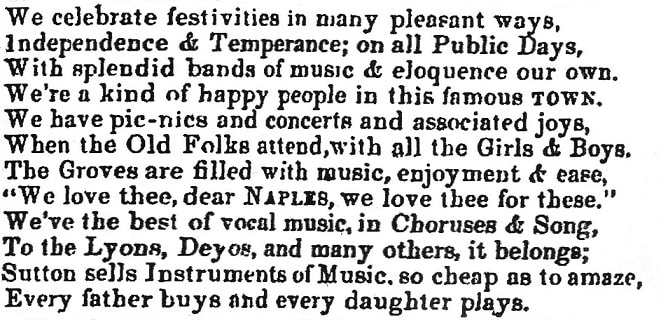

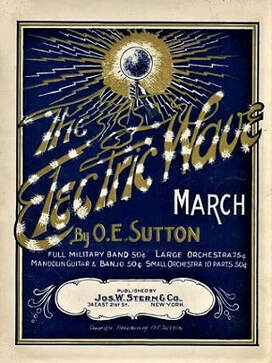


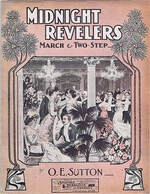


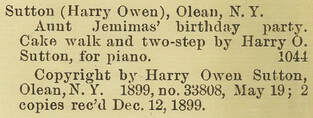
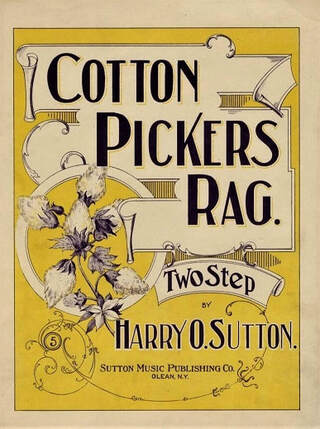

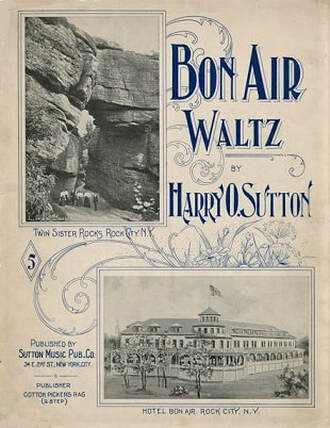

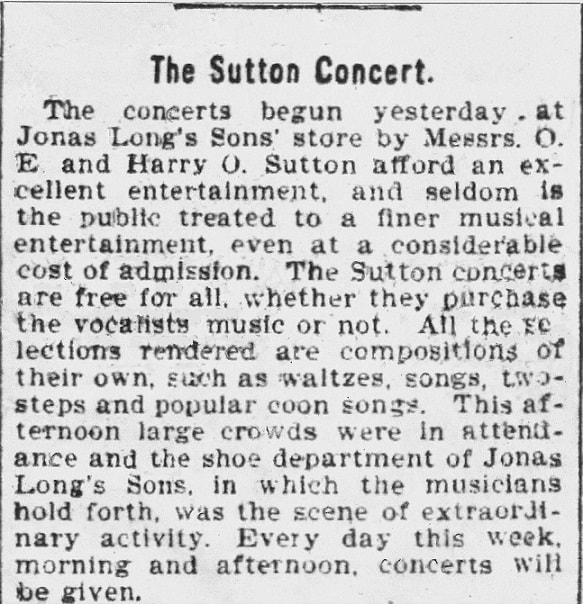
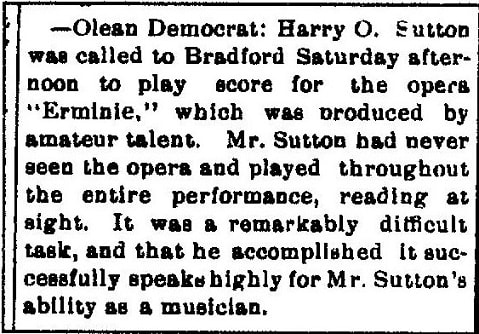



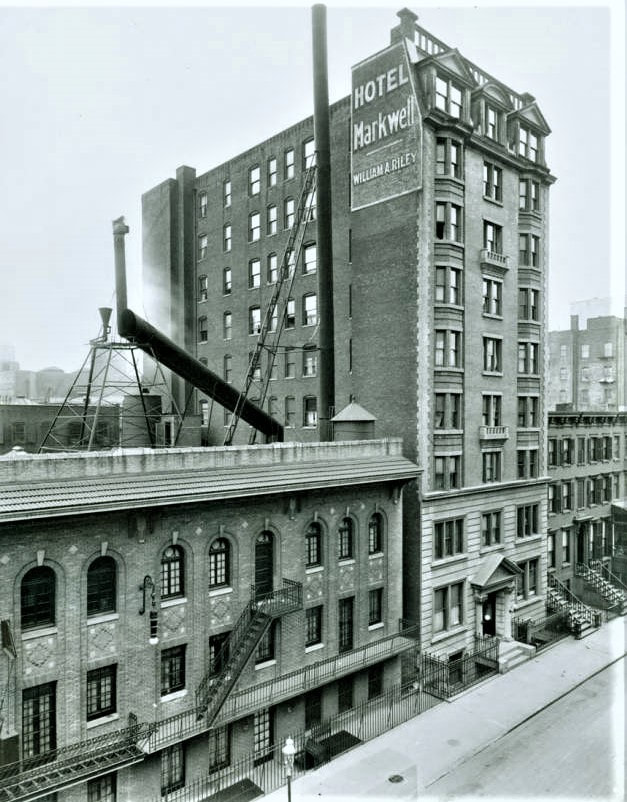







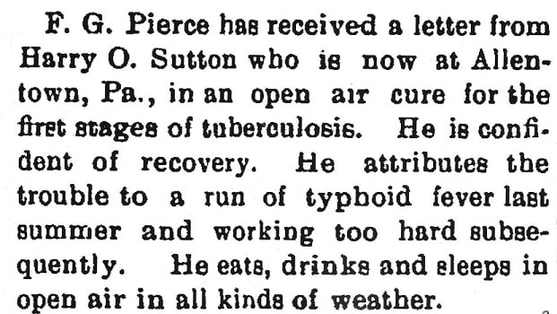





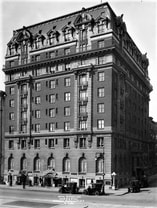

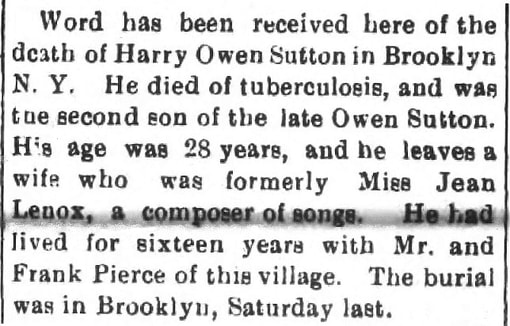


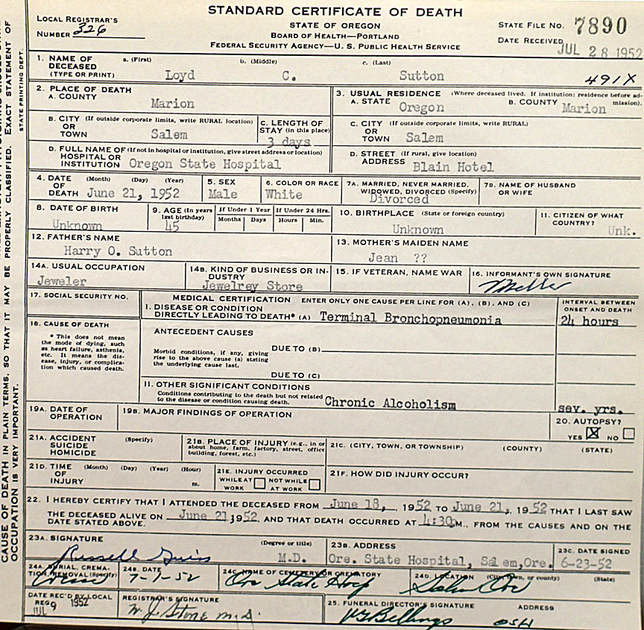


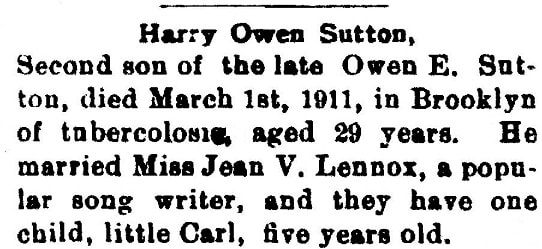

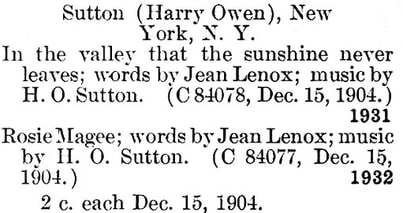


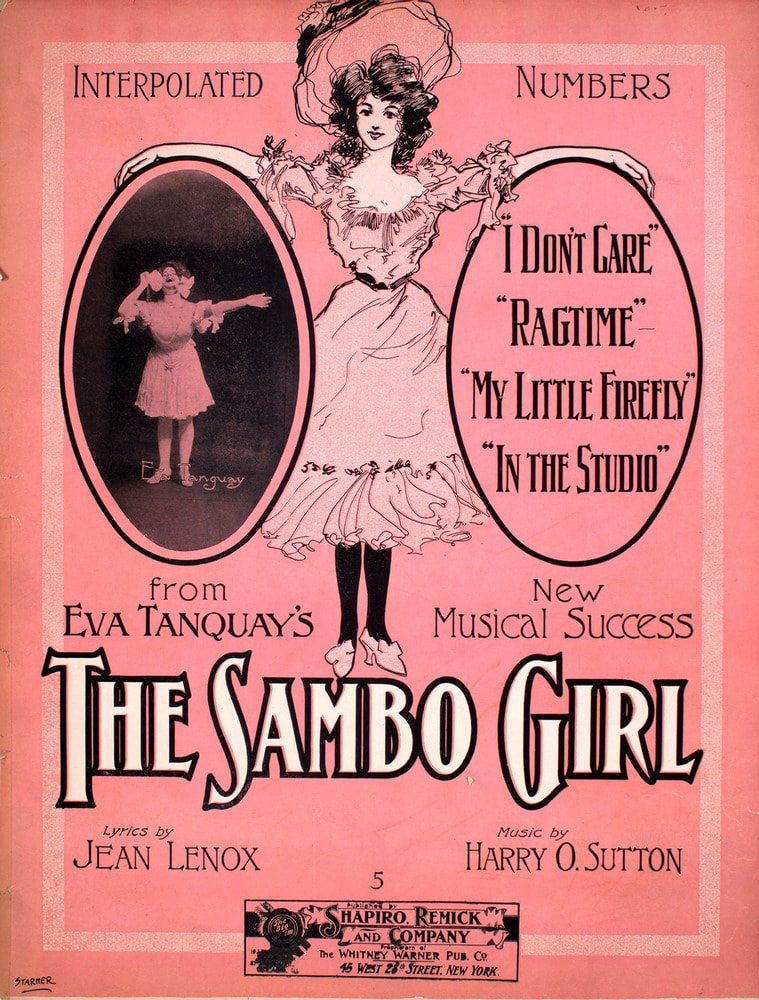

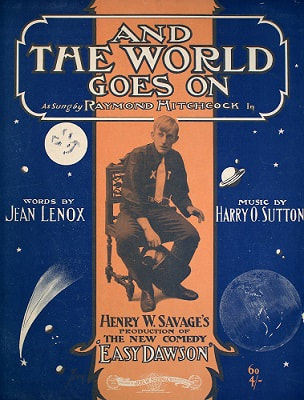
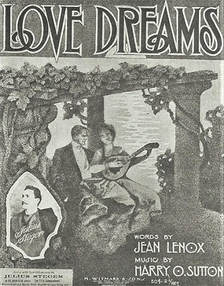

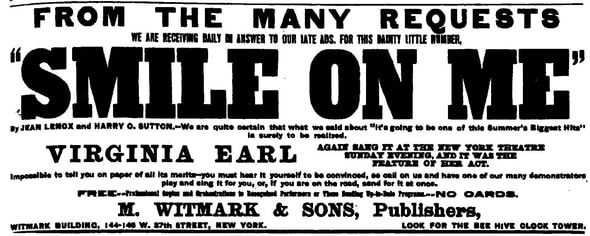




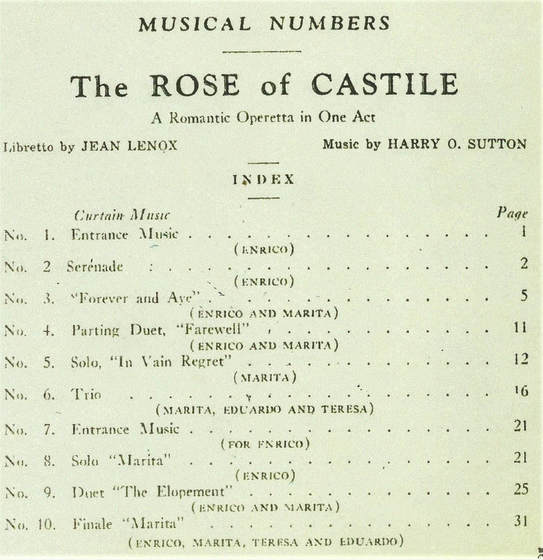

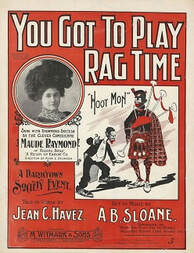


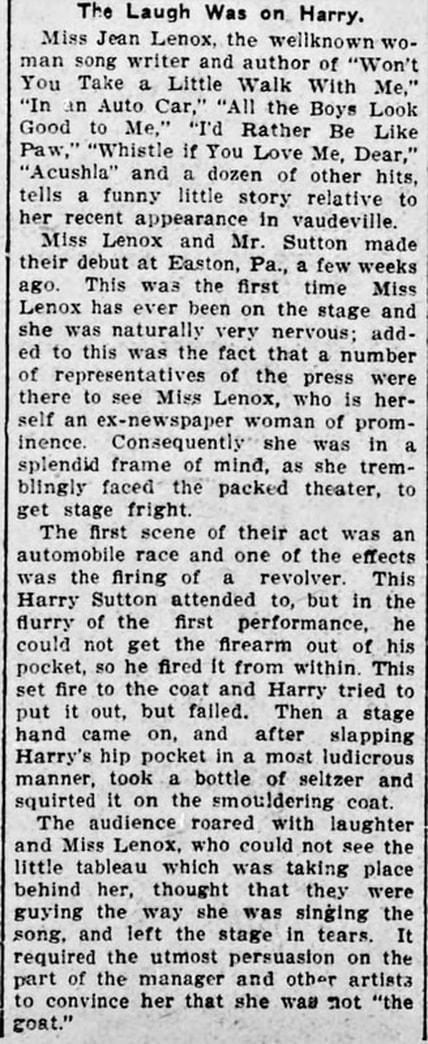




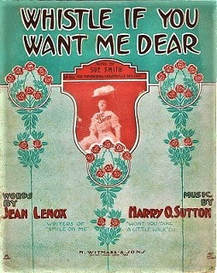

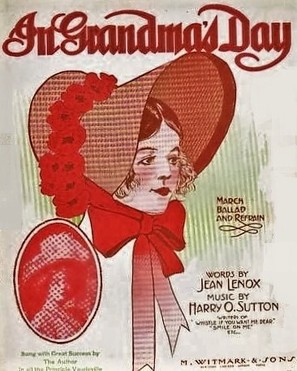


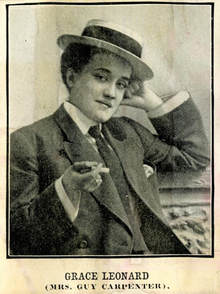





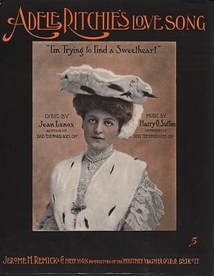

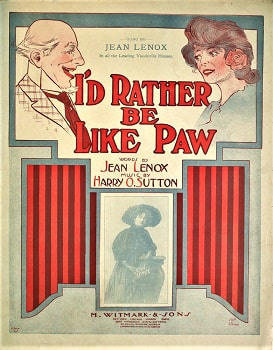
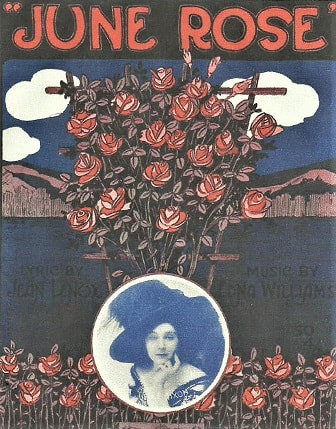
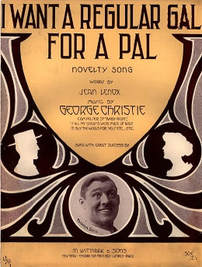
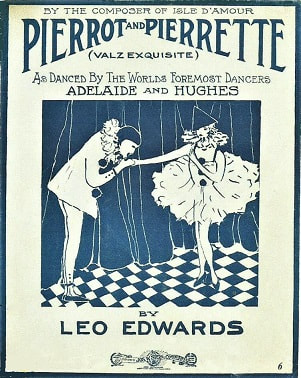
 RSS Feed
RSS Feed